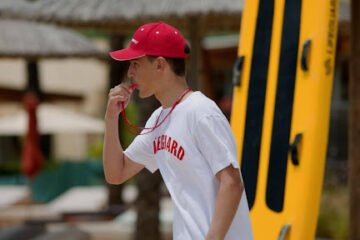Installing rugby turf involves several important cost factors that can significantly impact your overall budget. By understanding these factors in detail, you can effectively plan your project and make informed decisions that align with your financial goals.
Turf Type
The first decision is the type of turf. There are two main options: natural grass and artificial turf. Natural grass is often cheaper to install. However, it requires regular maintenance, including mowing, watering, and fertilization. Over time, these maintenance costs can add up.
Rugby turf has a higher initial installation cost. However, it requires less maintenance. It does not need watering or mowing. This can save money in the long run. Consider your budget and how much maintenance you are willing to manage.
Site Preparation
Site preparation is crucial for any turf installation. This involves clearing the area, leveling the ground, and removing debris. The cost of this step varies based on the site’s condition. If the land is uneven or has existing vegetation, preparation can be more expensive. Hiring professionals for this work adds to the total cost.
Drainage System
Proper drainage is essential for rugby turf. It prevents water from pooling and ensures a playable surface. Installing a drainage system can increase costs. The complexity of the system depends on your location and soil type. In areas with heavy rainfall, a more advanced drainage system may be necessary.
Labor Costs
Labor costs can vary widely. If you hire a professional company for installation, get multiple quotes. This helps you find competitive pricing. Ensure the company has experience with rugby turf. Quality installation is critical for longevity. Cutting corners on labor can lead to higher repair costs in the future.
Additional Features
Consider if you want additional features. These might include lighting, seating areas, or fencing. Each of these features adds to the overall cost. Think about what is essential for your facility. Prioritize your needs to manage expenses better.
Long-term Costs
While initial costs are vital, don’t forget about long-term expenses. For natural grass, this includes maintenance costs over the years. For artificial turf, consider replacement costs. Even high-quality turf needs replacement after 8 to 15 years, depending on usage.
Location
Your location significantly impacts installation costs. Transporting materials to remote areas can drive up expenses due to distance and accessibility. Additionally, local regulations may impose specific requirements that may affect the overall installation process and costs. Therefore, it’s essential to thoroughly research local codes and requirements before commencing your project.
Warranty and Maintenance Plans
When installing rugby turf, look into warranty options. Many manufacturers offer warranties on their products. This can cover defects and sometimes maintenance. Having a maintenance plan can save money and prolong the turf’s life.
Conclusion
Installing rugby turf involves various cost considerations. From the type of turf to site preparation and long-term maintenance, each factor plays a role in the overall budget. Take the time to evaluate your options. Understanding these costs will help you make informed decisions and manage your financeseffectively. If you have questions about rugby turf or want to explore high-quality options, don’t hesitate to contact CCGrass, a leading artificial grass supplier.



